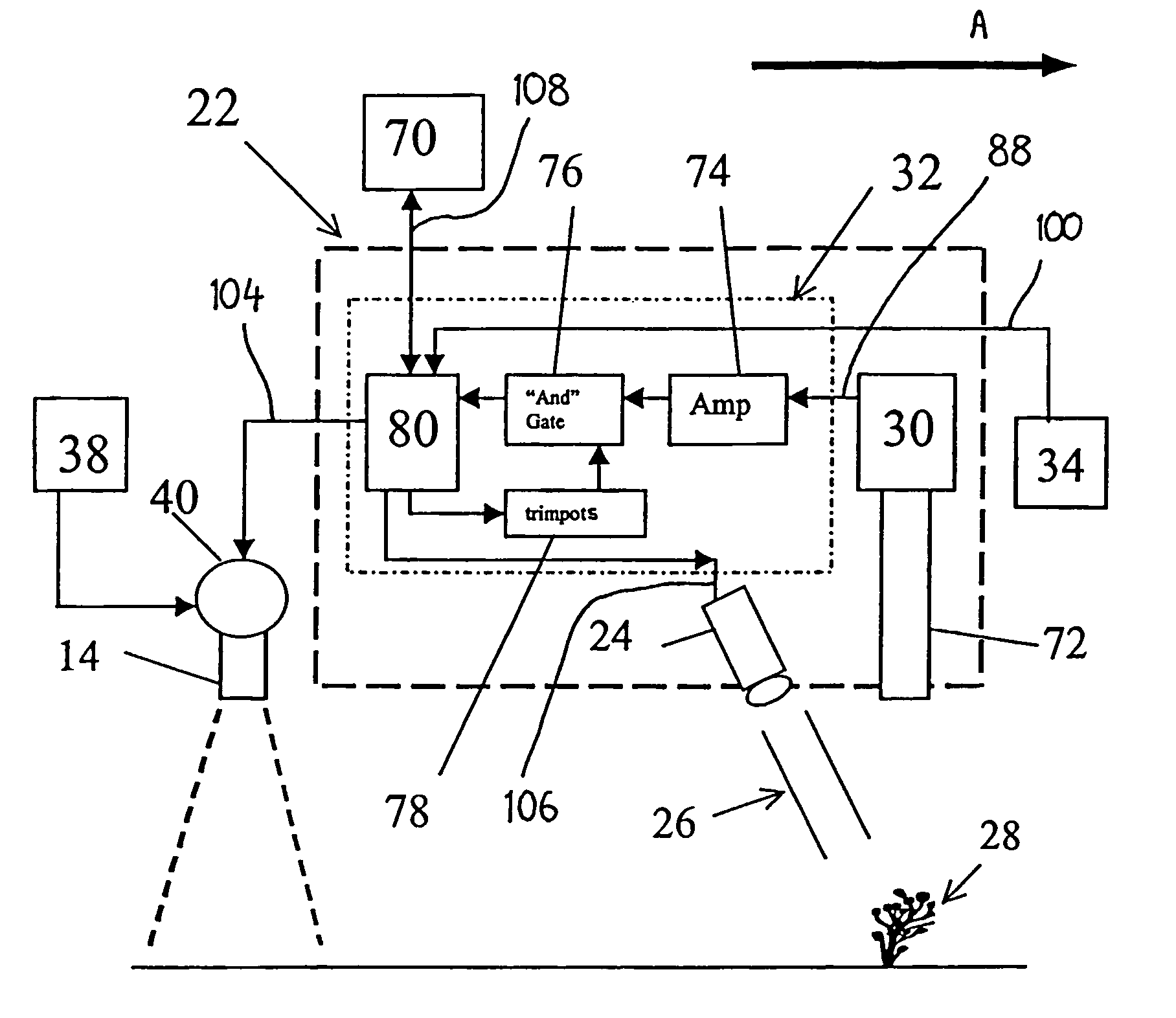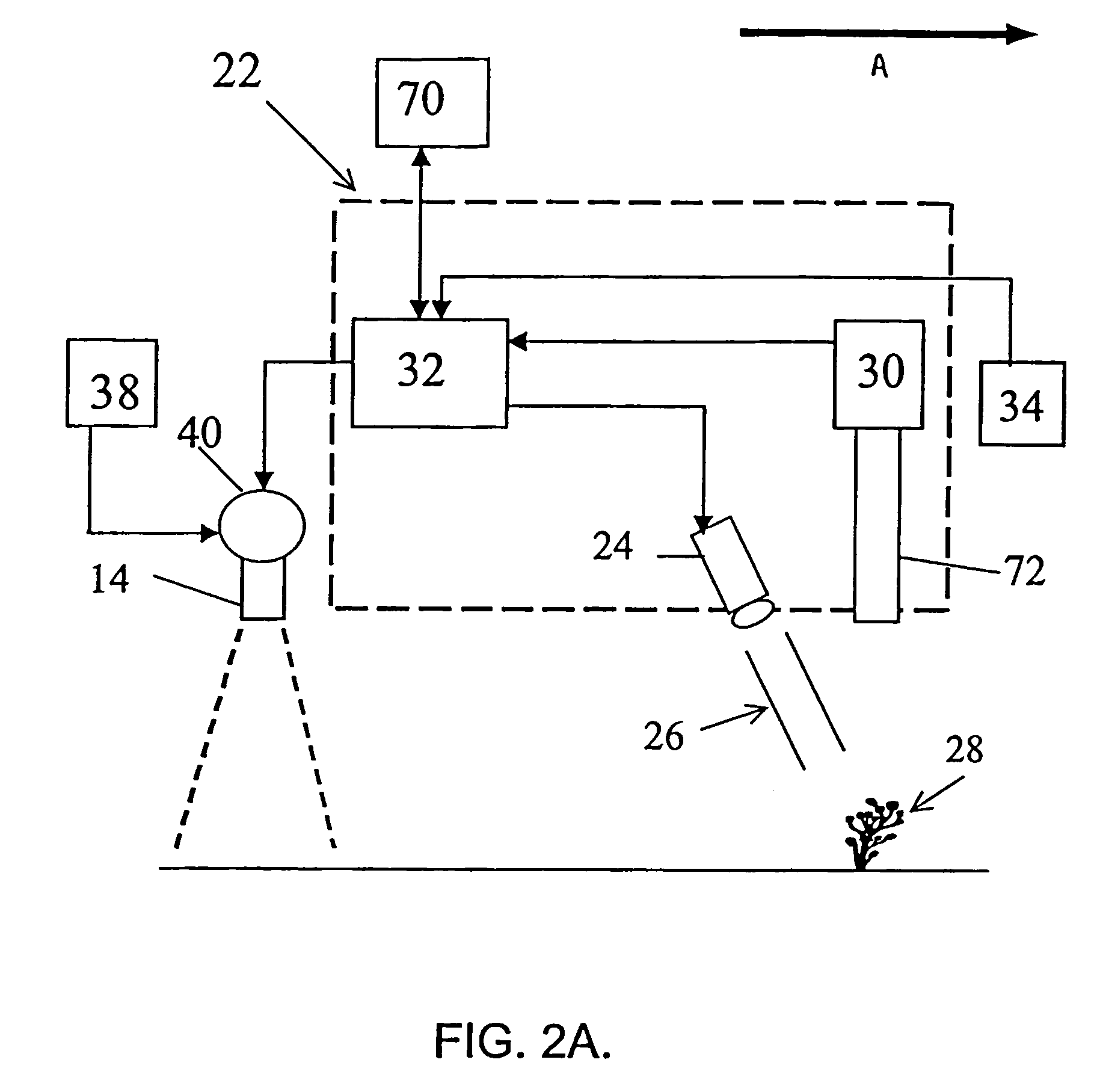Selective weed discrimination
a weed discrimination and selective technology, applied in the field of agricultural boom spray, can solve the problems of inconvenient change of geometric array for each type of weed desired to be distinguished, inability to distinguish weeds, and inability to spray herbicides indiscriminately on the crop, so as to reduce the incidence of false positive spectral responses
- Summary
- Abstract
- Description
- Claims
- Application Information
AI Technical Summary
Benefits of technology
Problems solved by technology
Method used
Image
Examples
Embodiment Construction
[0032]In order to facilitate a more detailed understanding of the nature of the invention a preferred embodiment of an apparatus and method for discriminating different types of ground vegetation will now be described in detail, by way of example only, with reference to the accompanying drawings, in which:
[0033]FIGS. 1(a) and (b) illustrate a boom spray which incorporates an apparatus for discriminating different types of ground vegetation in accordance with the present invention;
[0034]FIGS. 2A and 2B are schematic illustrations of a preferred embodiment of the apparatus for discriminating different types of ground vegetation employed in the boom spray of FIG. 1;
[0035]FIG. 3 illustrates schematically the method for discriminating different types of ground vegetation in accordance with a preferred embodiment of the invention;
[0036]FIG. 4 illustrates a preferred embodiment of a pair of sensors employed in the apparatus of the present invention;
[0037]FIG. 5 illustrates graphically the ...
PUM
 Login to View More
Login to View More Abstract
Description
Claims
Application Information
 Login to View More
Login to View More - R&D
- Intellectual Property
- Life Sciences
- Materials
- Tech Scout
- Unparalleled Data Quality
- Higher Quality Content
- 60% Fewer Hallucinations
Browse by: Latest US Patents, China's latest patents, Technical Efficacy Thesaurus, Application Domain, Technology Topic, Popular Technical Reports.
© 2025 PatSnap. All rights reserved.Legal|Privacy policy|Modern Slavery Act Transparency Statement|Sitemap|About US| Contact US: help@patsnap.com



